Are there just 14 top allergens in the UK? Or are there actually 19? For people with allergies, there are six separate cereal containing grains that they could be allergic to.
In America they are now 9 allergens that must be labelled, a move that updated the list to add sesame in January 2023.
For coeliacs they will react to all of the gluten containing grains, whilst some coeliacs are able to tolerate gluten free oats. Oats contain avenin which is a similar protein to gluten; coeliacs can also react to gluten free oats.
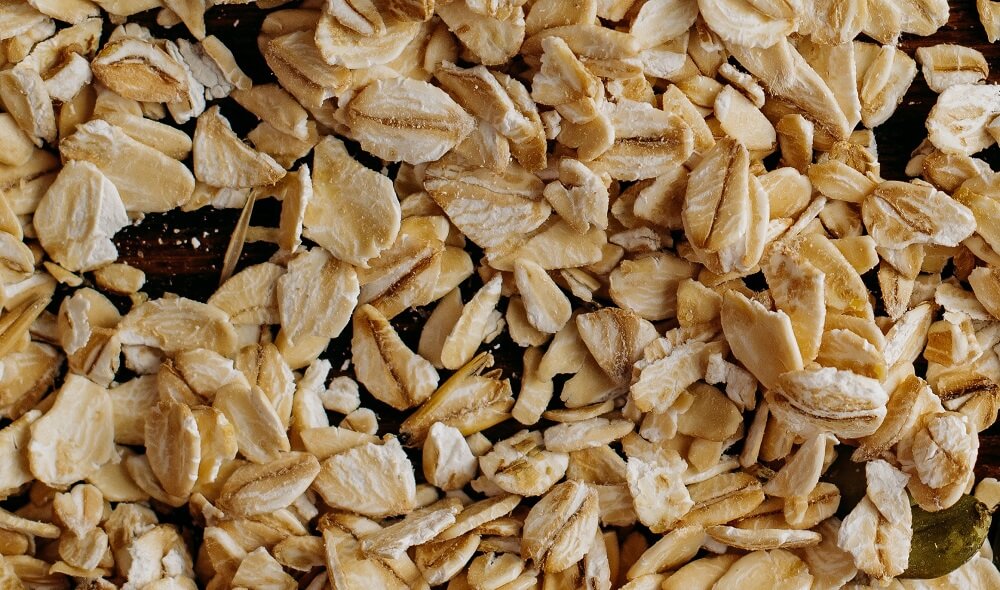
The Top 14 allergens in the UK
In the UK we have designated fourteen allergens that food production and food service companies must label on shop bought goods and on meals prepared at restaurants etc.
But it’s not just fourteen different foods that companies must avoid.
- Celery
- Cereals containing gluten
- Wheat
- Rye
- Barley
- Oats (even gluten free oats)
- Kamut
- Spelt
- Crustaceans
- Eggs
- Fish
- Lupin
- Milk
- Molluscs
- Mustard
- Nuts
- Peanuts
- Sesame seeds
- Sulphur dioxide
- Soya
Visit the Food.gov website for a detailed explanation of what’s included in the Top 14 allergens in the UK
Check out The cereals containing gluten in the Top 14 allergens here.
I’ve always been confused about why gluten free oats are included in this list of the Top 14.
Gluten free oats are still considered a cereal containing gluten
I’m pretty sure most consumers are confused about this and I wouldn’t be surprised if food manufacturers were too.
Read Why Gluten Free Oats are a cereal containing gluten written by Alex Gazzola, who explains it better than I can. You’ll have to read his blog but this is the introduction:
“The ‘cereals containing gluten’ are defined to be wheat, rye, barley, oats and their hybrids. Some people interpret ‘cereals containing gluten’ in law to mean “cereals when they have gluten in them” — but ‘Cereals containing gluten’ does not mean that. ‘Cereals containing gluten’ means “cereals which are defined to be of a gluten-containing nature”, and the main four are named above.”
The top 9 allergens in the USA
In America their list of allergens is smaller but simpler. They list Wheat as one of their top 9 allergens but not all the other cereals containing gluten. Interestingly and helpfully sesame has just been added to this list, bringing the list up from eight allergens to nine.
- Milk: Milk accounts for the highest occurrence of food allergy in infancy but is outgrown in up to 90 percent of cases by age 6, according to FARRP.
- Eggs: Respiratory, digestive system, and anaphylactic reactions after eating egg proteins have been reported, but mostly in children under age 6. Most of the problematic proteins are in the egg white.
- Fish: Common symptoms of fish allergy include skin and gastrointestinal reactions. The major fish allergen, parvalbumin, cannot be neutralized by heating.
- Crustacean Shellfish: Allergy to crustacean shellfish (like shrimp, and lobster) and to molluscan shellfish seems mostly to affect older children and adults. Gastrointestinal and respiratory symptoms are typical.
- Tree Nuts: People allergic to tree nuts must strictly avoid nuts because even a very small amount can trigger severe allergic reactions. Many different types of tree nut allergens trigger allergies.
- Peanuts: Peanut allergies are the most common food allergies in children (up to 2.5% of children have them). Peanuts are particularly dangerous for allergic individuals due to the low amount needed to provoke a reaction and the high frequency of fatal reactions.
- Wheat: Wheat and other cereals can cause allergic reactions, mostly in infants, but usually resolve within their first few years. Individuals who have celiac disease are gut-sensitive to gluten.
- Soybean: Allergic consumers find soybean difficult to avoid because, like glutenous flours, it is used extensively in processed foods.
- Sesame: Approximately 1.5 million people in the U.S. are allergic to sesame—even one or two sesame seeds can cause a reaction.
Interestingly they also put Crustaceans and Mulluscs together under one category, something Alex suggests as a way of simplifying the Top 14 listing we have in the UK. We don’t want to make even longer!
So how is coeliac disease included in the UK Food Allergen regulations? The FDA handles gluten free claims separately and included the cereals containing gluten listed above for the UK. Read How does the FDA handle gluten free?
Check out The Top 9 allergens in America for the full details
Top 10 allergens in Australia
In Australia they have a different number of allergens again, just ten for them but they also have one category for shellfish and molluscs. This does make sense to me, having these together because they are very similar. I don’t if people can be allergic to shellfish but happily eat molluscs? I guess they can, but it seems to help by putting them together.
- Wheat
- Peanuts
- Tree nuts, or simply ‘nuts’, are one of the most common food allergies worldwide. Tree nuts include almonds, Brazil nuts, cashews, hazelnuts, pecans, pistachios, chestnuts and walnuts.
- Shellfish – Shellfish refers to aquatic shelled animals — especially those that are edible — like molluscs (e.g. oysters, abalone, cockles, octopus, squid) and crustaceans (e.g. lobster, crab, crayfish, prawns, shrimp)
- Eggs
- Milk
- Fish
- Soy
- Sesame seeds
- Lupin
The Food Safety organisation in Australia lists it’s Top 10 Food Allergens here.
Food Allergen Regulations compared
| Europe | America | Australia | ||
|---|---|---|---|---|
| 1 | Celery | x | ||
| 2 | Cereals containing gluten | x | Wheat | Wheat |
| 3 | Crustaceans | x | Shellfish/Molluscs | Shellfish/Molluscs |
| 4 | Eggs | x | x | x |
| 5 | Milk | x | x | x |
| 6 | Fish | x | x | x |
| 7 | Lupin | x | x | |
| 8 | Molluscs | x | ||
| 9 | Mustard | x | ||
| 10 | Nuts | x | x | x |
| 11 | Peanuts | x | x | x |
| 12 | Sesame | x | x | x |
| 13 | Sulphur dioxide | x | ||
| 14 | Soya | x | x | x |
Interestingly we have mustard, celery and sulphur dioxide in the European Food Allergen list, which don’t feature in the US or Australia. This is because the levels of people with these allergies are much higher in Europe.
How can we simplify confusion over these gluten free oats?
In this instance I think that America and Australia have a simpler food allergen list, with gluten free (less than or equal to 20 ppm of gluten) under separate gluten free labelling regulations. Both things need to be labelled but they are quite different and the regulations are protecting different communities. Those with allergies and those with coeliac disease. The two groups have a lot in common but listing the Top 14, being the top most allergenic, makes sense to me that it’s wheat as that is a far more common allergen than rye, barley and oats.
Whether that solves the oat issue I’m not sure. Oats are oats and gluten free oats are still oats… gluten containing grains. Does this all make sense now?
I’d love to hear your views on this! How can we make it all simpler? Do you know any food manufacturers who are gluten free but label their oats in bold as an allergen? so confusing
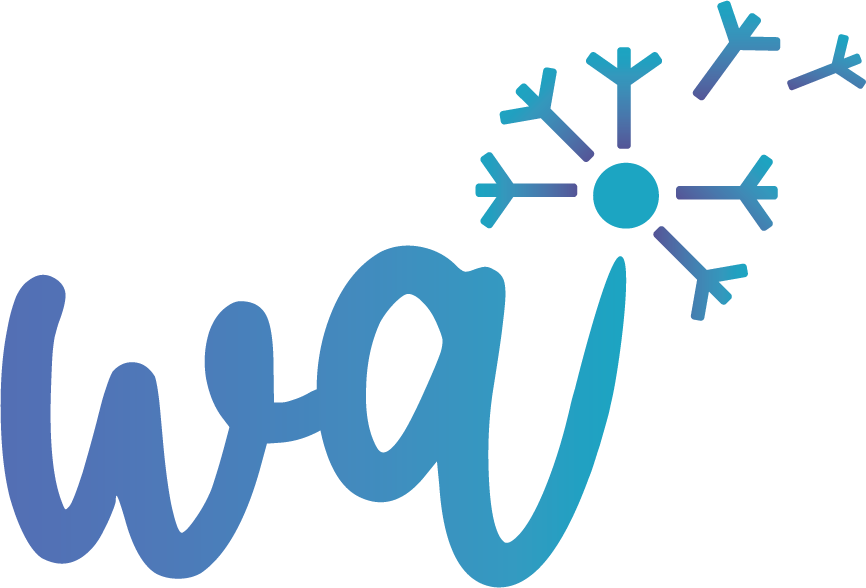


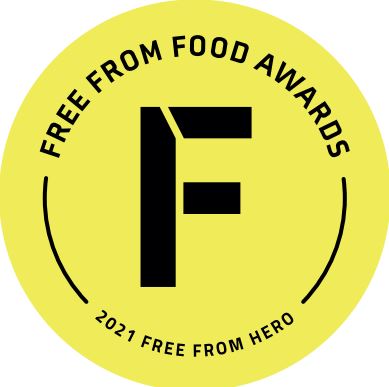


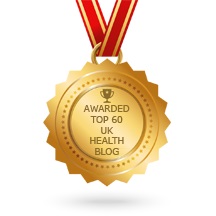

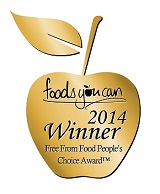
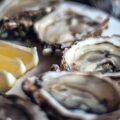
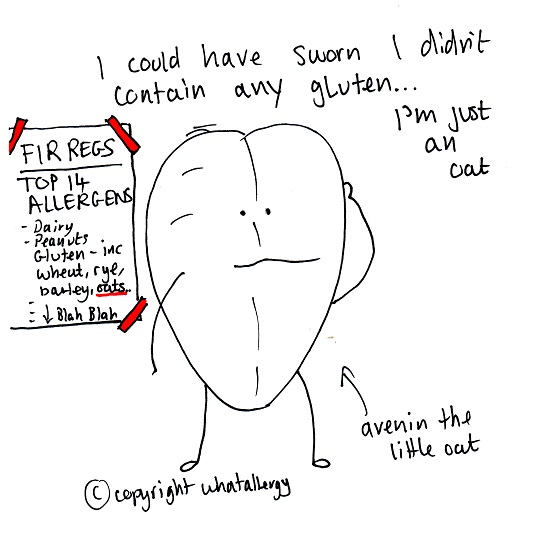
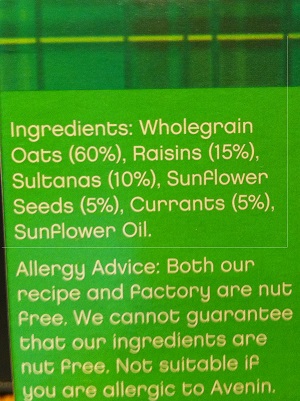
I agree it’s not *really* 14 allergens. Instead, it’s 14 allergens or groups of allergens. If you count the cereals individually, then there’s an argument for counting the tree nuts individually, and counting celeriac as well as celery, and then what about all the individual seafood species? It’s never ending …. I think we’re familiar with ’14’ now and probably ought to stick to it!
It’s a few years’ old so will be a little outdated, but this former post of mine on international food allergens may interest you. There are some quirky ones! https://www.allergy-insight.com/international-food-allergens/
Alex
When you put it like that Alex there are LOADS aren’t there. Really interesting debate and I really enjoyed your blog explaining the oats debacle. I’m pretty sure the food allergen training companies get doesn’t explain this at all. Specialist trainers will understand this but it is confusing. Thanks for the comment.
With regards to the oats issue, the main problem and consequence is brands claiming to be ’14 free’ and yet using gluten-free oats. The weird thing about it is that they normally correctly emphasise the gluten free oats in their ingredients (it has to be emphasised because, duh, it’s an allergen) and yet they still make the ’14 free’ claim. When you think about it, it doesn’t make sense: why are they claiming to be allergen free when there’s an emphasised allergen right there in the ingredients???
But lots get this wrong – even Allergy UK once made a reference to an ‘allergen free factory’ (which used oats).
I think possibly ‘cereals containing gluten’ should be referred to as something else – like ‘grass grains’. Removing any reference to gluten immediately solves the confusion.
Good answer. The nuts inclusions and exclusions vary widely due to the biological classifications, what we know as nuts are not “true” nuts. Coconuts are included in the US, not in the EU. Or have I got my nuts mixed? Pun intended.
Snails are also allergens. Even land snails, so shellfish doesn’t explain it either. I always forget where squid & octopus fit in too despite the Biology degree and interest in scuba diving. I didn’t enjoy this subject at university, classifying sponges by their stomach sacs (or whatever, they don’t really have organs). I remember falling asleep……
Similarly, plant-based cannot be defined as “made from plants” as mushrooms are fungi not plants, what about salt etc. It’s as simple as it’s going to get.
I think some countries include anything with nut in the name, including coconut and nutmeg to name just a few. when in fact they are not nuts at and should be safe. Although I’m sure someone is allergic to them too. Snails comes under molluscs I think. It is all rather fascinating how the classifications work. I find it interesting anyway. I think you’re right, the list is pretty good. I just find the country differences interesting too and gluten free oat thing very confusing. PS. Thanks so much for your lovely comment! Keep up your great advocacy work.
Yes, very good points here – the ‘group names’ aren’t perfect. And it’s not always helpful to think of biological classifications either. When it comes to allergens, what is and is not botanically a ‘tree nut’ is irrelevant in the UK/EU – what matters is whether it is one of the 8 named in the ‘tree nuts’ grouping. Coconut, chestnut, pine nut – not named. Doesn’t matter what the biologists say about them (no offence!) 🙂
grass grains could work, but I doubt they’ll change it now. It is going to remain confusing and I think the manufacturers are doing the best the can and also finding the labelling laws a little confusing. At least oats are in bold in most cases so people can decide whether gluten free oats are OK for them.
It’s not a big change, though. ‘Cereals containing gluten’ is just a group name which serves as a shorthand for the list of grains. Changing the group name is not changing the allergens. Removing reference to ‘gluten’ will make it clear that it doesn’t matter whether the gluten is in the grain or the gluten has been removed from the grain – it’s still an allergen. (It’s not only oats – it’s also barley in gluten-free beer. Still an allergen, even though it’s been ‘deglutenised’.)
I’m going to disagree with you on the brands doing the best they can. Yes, it’s confusing, but also – brands can get help from FSA, trading standards or others in the industry such as the Free From Food Awards team. I’ve told lots of brands they’ve got it wrong on GF oats, but if change happens it is slow, and the pushback has occasionally been strong and unpleasant. In my experience, brands have been far too touchy on this issue.
I love a heated debate and I love learning stuff about allergies too! thanks Heather and Alex for wading in. I now feel much more able to discuss this!